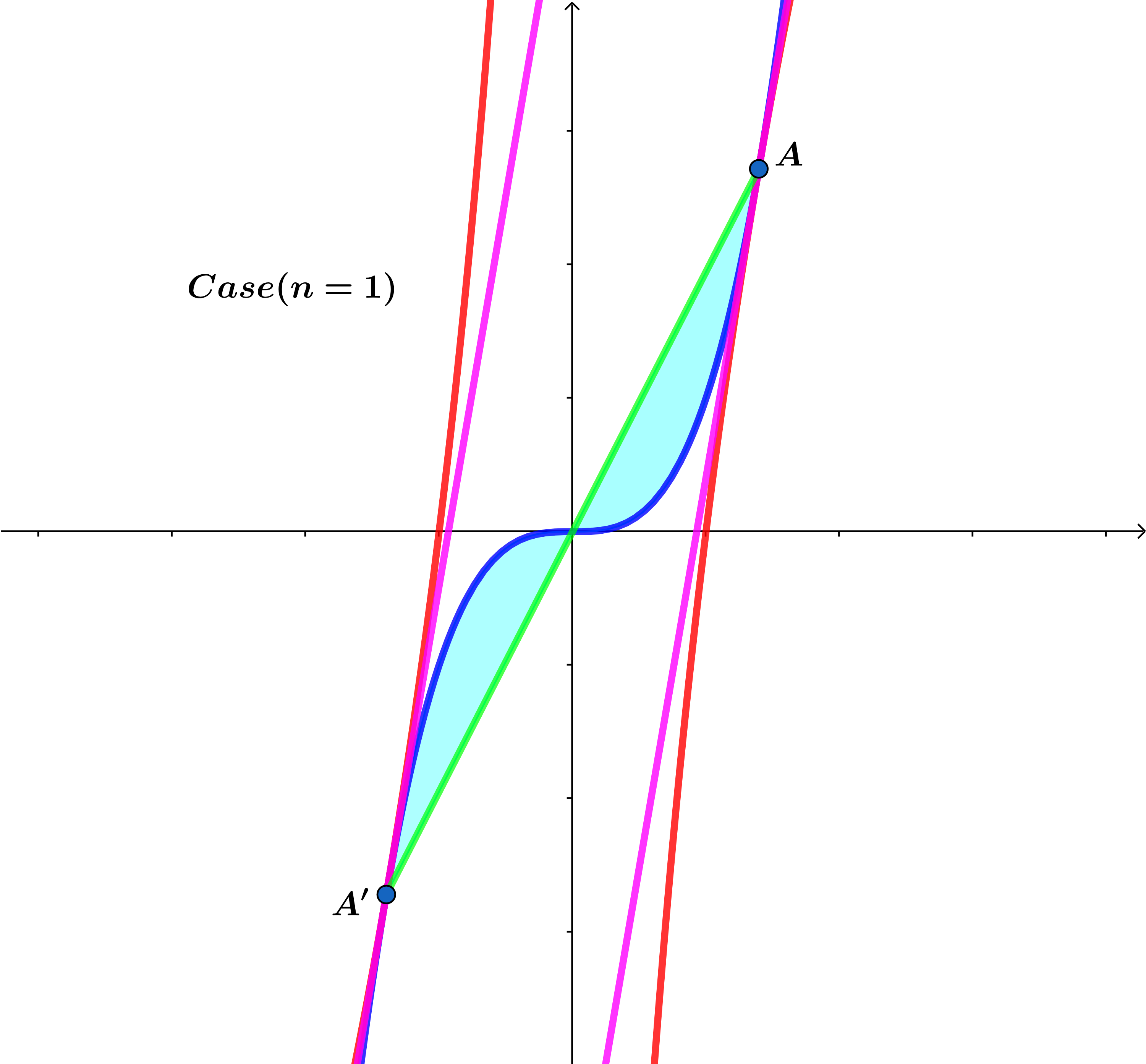Common Tangents, Areas, Logs and Limits.

Let be a positive integer and
and
and have common tangents at points and .
If is the area of the region bounded by and the line , find to seven decimal places.
The answer is 2.7182818.
This section requires Javascript.
You are seeing this because something didn't load right. We suggest you, (a) try
refreshing the page, (b) enabling javascript if it is disabled on your browser and,
finally, (c)
loading the
non-javascript version of this page
. We're sorry about the hassle.
Let f ( x ) = x 2 n + 1 and g ( x ) = lo g b ( x ) = ln ( b ) ln ( x ) for x > 0
⟹ f ′ ( a ) = ( 2 n + 1 ) a 2 n = g ′ ( a ) = a ln ( b ) 1 ⟹ a 2 n + 1 = ( 2 n + 1 ) ln ( b ) 1 ⟹ a = ( ( 2 n + 1 ) ln ( b ) 1 ) 2 n + 1 1
and
a 2 n + 1 = ln ( b ) ln ( a ) ⟹ ( 2 n + 1 ) ln ( b ) 1 = ( 2 n + 1 ) ln ( b ) ln ( ( 2 n + 1 ) ln ( b ) 1 ) ⟹ ln ( ( 2 n + 1 ) ln ( b ) 1 ) = 1 ⟹ ln ( b ) = 2 n + 1 ) e 1 ⟹
b = e ( 2 n + 1 ) e 1 ⟹ a = e 2 n + 1 1 ⟹ a 2 n + 1 = e
⟹ A : ( e 2 n + 1 1 , e ) and using the symmetry about the origin we have A ′ : ( − e 2 n + 1 1 , − e )
⟹ m A A ′ = e 2 n + 1 2 n ⟹ y = e 2 n + 1 2 n x
⟹ A n = 2 ∫ 0 e 2 n + 1 1 ( e 2 n + 1 2 n x − x 2 n + 1 ) d x = ( n + 1 n ) e 2 n + 1 2 n + 2
⟹ lim n → ∞ A n = e lim n → ∞ ( 1 − n + 1 1 ) e 2 n + 1 1 = e ≈ 2 . 7 1 8 2 8 1 8 .